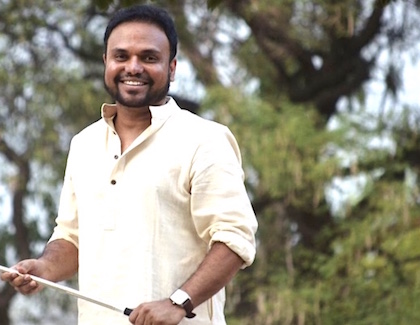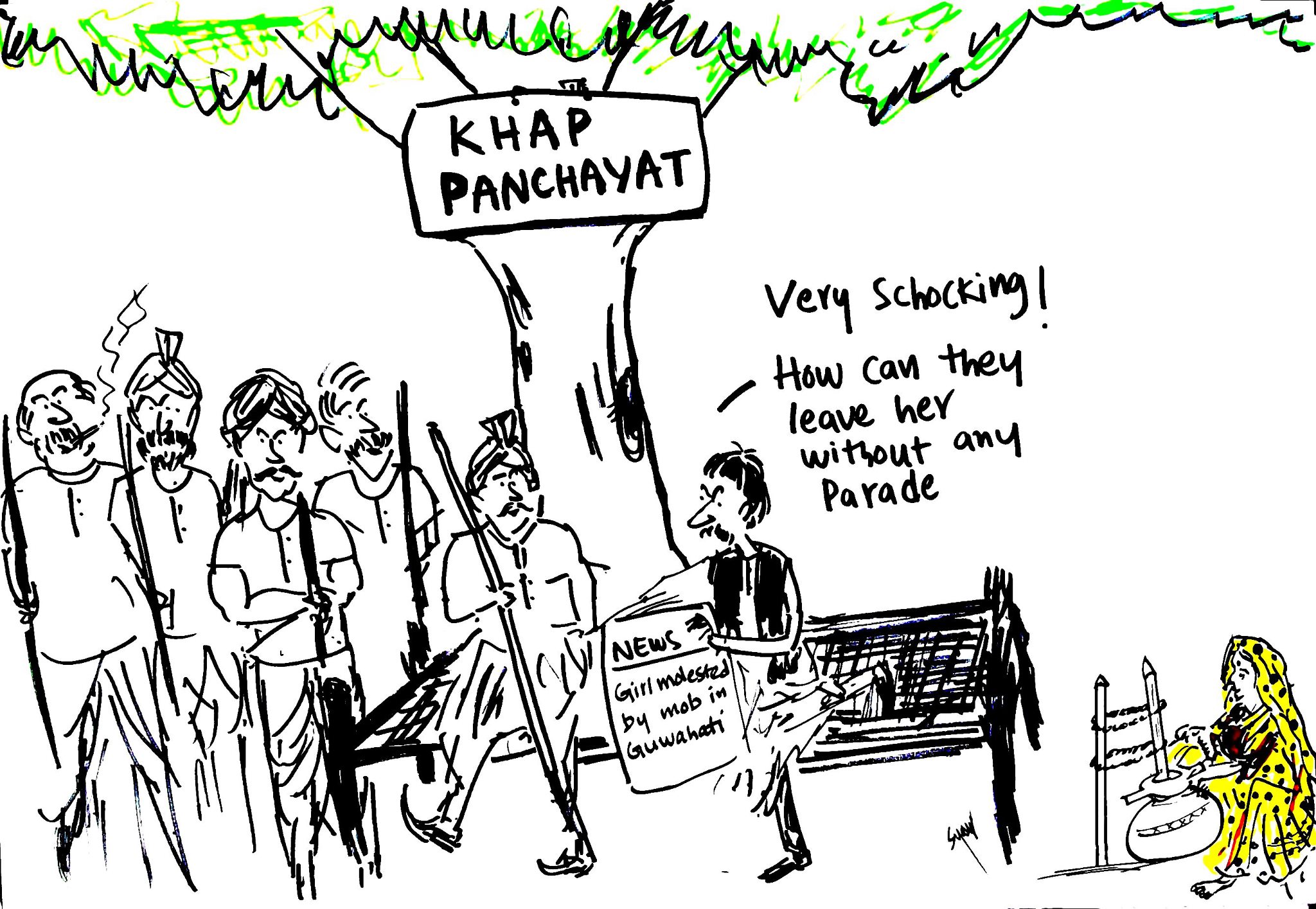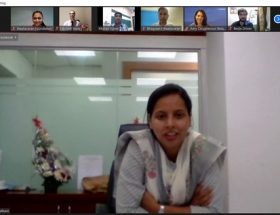Moses Tulasi

*Spoiler Alert: The piece contains an analysis of the film and inadvertently has to divulge certain plot details.*
When was the last time one had seen a Dalit character playing a protagonist in Telugu films before the OTT revolution? Shekhar Kammula’s recent Telugu film ‘Love Story’ deserves to be applauded in that an ‘A-list’ writer/director from the industry starring ‘A-list’ cast produced a film with a Dalit protagonist and that too a Dalit Christian. This comes as a breath of fresh air continuing with the recent trend of visibility and positivity towards Christian characters, specifically Dalit Christians in Telugu films like ‘C/O Kancharapalem’, ‘Palasa 1978’ etc. After all, both Telugu states have a history of anti-caste revolutions, mass conversions to Christianity that gave Dalits access to the most formidable resources of the time – education and healthcare – along with reclaiming their self-respect and human dignity. As a result, there is a sizeable demography of Dalit Christians in both Telugu states and this visibility was only long overdue.
Shekhar Kammula, the writer/director, was born in Eluru in AP and brought up in Hyderabad. His earlier films like ‘Happy Days’ and ‘Life is Beautiful’ etc. clearly depict the filmmaker’s own prejudices of caste & class and regional conflict between Telugu states. It has been a long journey since then, in reaching his latest film that ends up on the opposite side of the spectrum from where he started his career. The film’s region-politics deserve an essay on its own. Let’s just say here that it has taken this long for a Telugu film to draw a corollary on Telangana’s most celebrated love story from history, that of the founder of Hyderabad city, Mohammed Quli Qutub Shah, a Shia Muslim Sultan and Bagmati, a dancing girl inevitably from a lower caste Hindu background from across the Musi river. The film’s protagonists are a Dalit Christian man and a dominant caste Hindu woman who fall in love.
Here we will focus on the caste politics.
There are a few caste nuances that Shekhar gets quite well. The dominant caste dora in the village when he learns of the protagonist making a living as a Zumba dance instructor in Hyderabad takes a dig at the times that have come when “entertainers” are also being paid. Historically, singing and dancing were professions held by the lower castes who had to dutifully perform according to the whims of upper and dominant castes during their celebrations with or without remuneration. The mother of the protagonist tries to put some sense into him when he insists that she arrange his wedding with the dominant caste girl the traditional way. She reminds him that no matter how respectfully she would approach them, even by wearing an expensive saree, the dominant caste family’s primary concern would still be if the protagonist’s family left their footwear outside before entering their premises. This is meant to clarify class doesn’t matter much with caste prejudice. The cousin of the protagonist confessing how powerless he is in the face of caste realities of the society despite being a police officer is another revelation. The most remarkable nuance captured was when the two lovers elope, they also take the boy’s mother along as she would bear the brunt of the elopement by the girl’s dominant caste, if left behind.
While the film moves forward, one is able to also move beyond the periphery when deeper issues related to caste become obvious in the narrative. It might be difficult for a common moviegoer to notice these issues as the film is adorned beautifully with good-looking actors, music and production values. Here, we will explore some of the issues.
Land Ownership
Historically there were a few occasions when the Dalits of Telangana were able to secure land albeit in meager proportions.
The first opportunity was in the early 1940s with Bahadur Yar Jung’s campaign of mass conversion of Dalits to Islam that resulted in distributing some jagir and state lands to Dalits for tilling or/and ownership. In this regard, scholarship is needed to examine the period of Mohammed bin Tughlaq’s brief but caste-conscious rule of Telangana from early 14th century as well.
Next opportunities came during Telangana armed rebellion (1946-52), state Land Reforms and Bhoodan movements of 1951-52 etc. but none of these movements resulted in an effective distribution of lands across marginalized communities as most Dalits in the state remain landless till date. The point that is being attempted here is the disingenuity of a certain plot narrative that plays at odds with this complicated history.

With such a background on land ownership, it comes across as very immature that the protagonist asks his mother to sell the meager land they own in the village to set up his business in the city and that too to prove a point to a dominant caste acquaintance who challenges him. Alas what is lost in translation is that the single mother owning such land with so much historical deprivation and tilling her own land being a Dalit in the village in itself is a revolution.
What seems even more shocking is that after some resistance the mother agrees to it. The hilarious neighbor played by the legendary Gangavva seems to be the only sane voice in the matter who takes back the chicken curry she prepared for the protagonist when she learns that he wants to sell the family land. Also, chicken curry is used to play safe instead of beef curry but in their defense bagara rice-chicken curry is one of the most popular dishes of Telangana. So, we can let this slide.
Entrepreneurship
The casual urban casteism is depicted well where a dominant caste acquaintance suggests to the protagonist that he should better try government welfare schemes and leave entrepreneurship to generationally wealthy castes like himself. This challenge only strengthens the entrepreneurship aspiration of the protagonist. If the writers had realized the gravity of this scene, the acquaintance would have been turned into a major character perhaps. But we can allude to him as representing the larger society and its attitude towards Dalits.
This aspiration from the beginning comes as a refreshing plot point and his girlfriend lending him moral and material support and actually becoming a partner in entrepreneurship is liberating at a different level. Sai Pallavi being a natural actress displays tremendous grit in this chapter making it look seamless that women could be entrepreneurs as well on an equal footing with men. With such a momentous plot build up, it comes as extremely disappointing to the audience that the protagonists abruptly plan to sell their enterprise that they built from scratch.
Diversion of Caste Conflict
The screenplay takes up 3/4ths of the movie in establishing the fact that the two protagonists in love come from different castes and religious backgrounds and in the realization that this is an issue that may lead to a serious consequence resulting in loss of life even. They hence hatch a plan of committing suicide, hiding their actual intention to flee the country. How we wish they had stuck to the plan as it would have left a much stronger impact on the audience and a statement on how rotten the country’s caste realities are that people in love would have to leave the country in order to survive.
The writers instead seem to be in search of an alternate resolution to the story contrary to the one hatched by the characters themselves as it might hurt the nationalist spirit and it didn’t seem to matter to them even if the resolution isn’t on the lines of caste, the primary conflict. Hence they introduce a secondary conflict to the story – child sexual abuse.
Pedophilia and child sexual abuse are very serious socio-cultural issues and the credit is due to the writers for bringing up this brave subject. However to bring it up as a secondary conflict into a story line that is ripe with caste conflict and offering the narrative a hurried resolution with punishing the casteist antagonist for his child sexual abuse comes across as a diversion from the primary issue.
Sai Pallavi again excels in this chapter in perhaps the most difficult and emotionally draining performance of her career. Too much rests on the shoulder of her character and too much is expected out of her than all the other characters put together. She does her best and rises beyond the script’s mix of conflicts.
The damage of this mix of conflicts can be better explained by sharing Mercy Margaret’s (Kendra Sahitya Academy Yuva Puraskar Award) analysis on social media post comparing two kiss-scenes, first from the relevant film with another from a recent caste-based Telangana film Dorasani (2019). In the latter, the dominant caste girl gives the Dalit boy a jar of water and when the boy wonders if he is fit to drink the water offered by her (access to water and purity/pollution politics of sharing food and water have been at the center of caste conflict for centuries), the girl kisses him on his cheek reassuring him that she is ready to cross all boundaries while also answering his question.
In contrast, the girl in our film kisses the boy as an apology after insulting him with a caste slur. The problem here is that by this time the audience has already been made aware that the girl has bigger issues at hand and hence her caste slur has to be pardoned for a casual slip of tongue.
Conclusion
Overall there are two conclusions to be drawn from the messy mixing of two conflicts. One, that the caste issue is completely sidelined and diverted towards the third leg of the film and second that an entire movie on the topic of child sexual abuse could have done better justice to the topic by itself. By the end of the film, the audience has watched two different movies: one in the first half and another in the second, like two different seasons of an OTT series.
While acknowledging the ugly caste realities of our society, the film is near-sighted and doesn’t delve into the deeper politics of caste like land ownership and lack of representation in private fields such as entrepreneurship.
The movie should still be appreciated for addressing the elephant in the room and contributing to the minimal but growing anti-caste consciousness in an industry otherwise enslaved with upper and dominant caste virtues.
The silver lining perhaps comes in the queering of the much touted and popularized folk song from the film “Saranga Dariya” that has been interpreted by several writers and social media enthusiasts, none so eloquently and comprehensively as Katta Srinivas of “Kotha Telangana Charitra” who says the song is rendered by Lord Shiva on his beloved wife, Parvathi.
The film’s Lord Shiva however is a Dalit Christian.
~
Notes
1) https://m.facebook.com/story.php?story_fbid=4548614415191523&id=100001290292090&sfnsn=wiwspmo
2) https://antharlochana.blogspot.com/2021/03/blog-post.html
~~~
Moses Tulasi is a Hyderabad based filmmaker who occasionally writes on history and culture.










